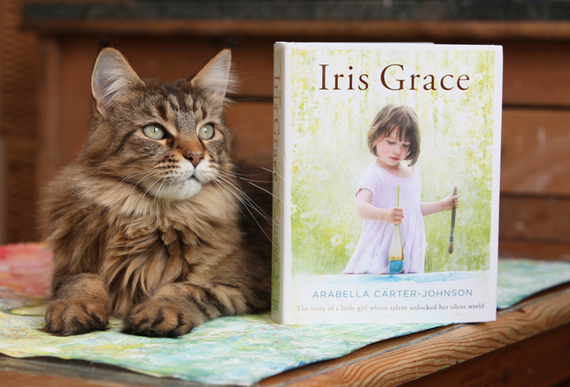The Realization That Changed The Way I Interact With My Daughter With Autism
The knowledge that “different is brilliant” is one of the most liberating and positive feelings our family has experienced since our daughter was diagnosed with autism at 2 years old. Iris barely communicated, socialized or even looked at us. She was obsessive, had sensory issues, hardly ever slept and found other children deeply disturbing. I had to fight through the darkness, wanting to conform, struggling in a world our daughter didn’t fit into and surrounded by people who didn’t understand her.
Now, four years on, everything has changed, and it all started with one crucial piece of the puzzle: learning to follow Iris, abandoning the idea of trying to be ‘normal’ and embracing her differences.
After many therapies, we found there was one place where Iris was always free and happy, and that was out in nature. We tried equine therapy at a Horse Boy center, and although a love of horses wasn’t there at that time, it was evident she had an intense interest in the forest, the light and colors that surrounded us. She was totally engaged as I rode with her through the avenue of trees, her fingers outstretched and moving in the breeze, her body relaxed against mine in the saddle. We discovered with Iris, the more time we spent outdoors, the better.
Later that year, we discovered Iris’ love of painting and began leaving her table and painting kit out in the kitchen or garden to use whenever she needed it. Over a year, she created more than 50 extraordinary impressionist-style paintings that caught the attention of art collectors worldwide. Iris became a famous child artists, inspiring families to look past their child’s diagnosis and to see their potential, shining a light on autism. To me, the most exquisite part is how her demeanor changes as she paints. She is more open and started to talk. 
In 2014, we brought home a Maine Coon cat called Thula, who became our second breakthrough. Thula showed me the way, proving time and time again how different was truly brilliant. Unlike any cat I have ever known, she takes baths with Iris, settles her down in the evenings and even rides along on our bike rides. But I like to think the bond Iris and Thula have isn’t a phenomenon that can’t be replicated. Many children with disabilities can benefit from having a pet in their lives. Sure, that pet may not be a Thula – a swimming, biking, boating super-nanny cat – but they will provide so much joy and ultimately help the child progress.
I have asked myself many times if any child could be like Iris, whether every child has hidden passions and skills waiting to be developed, encouraged and set free. I believe it’s true. We home educate Iris because it was what suited her – a flexible, organic approach focusing on her own interests. She is free to move and play, and I develop lesson plans where the motivation is intrinsic within the activity. She is self-motivated and keen to learn.
I have shared our story in my first book, “Iris Grace.” It’s a celebration of how “different is brilliant” and of the achievements of our little girl and her faithful best buddy. It documents the journey from the darker days, through her diagnosis to us learning how to connect with her and discovering her voice. I wanted to raise awareness for autism and what it is like to live with autism, but also to show people that there can be a future, and a bright one. I believe that there is always a key – it is about following the lead of your child.
Now I am embarking on a new and very exciting project called Kids Must Move with two pioneering authors, Rupert Isaacson and Kristine Barnett, who have inspired me in the past. It’s an online course that enables parents and teachers to effectively teach children on the autistic spectrum (or any child, for that matter) in a stress-free way, using movement and nature and following the child’s interests.
When Rupert explained the “Movement Method” his team had been developing for the past 10 years, it was a revelation to me. Their methods echoed mine, and I found all the things I know work with Iris were in this course. At last, I knew the science behind why what I was doing was working so well with her. After finishing the course myself, I wanted to join Rupert and Kristine’s team and be a part of this incredible new movement in autism that we believe will change so many lives.
I will be running the U.K. Movement Method Center from my home in Leicestershire, England. We will be offering training to parents, teachers, workshops, activity days, talks and outreach to schools.
We operate on the principle that children on the spectrum and children with neurological differences can learn, succeed and thrive. They can grow up to have jobs, careers and love; relegating them to the margins of society robs us of some of our best human resources. We embrace who these children are, and do not try to coerce them into being something they are not. We believe in what’s within each child, and in working with their strengths and interests in an environment that suits them. We follow them.
